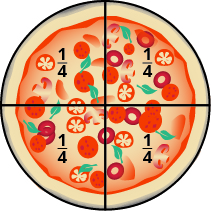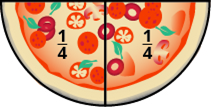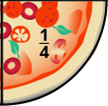24 Rounding
Section Information
Competency: You will be able to apply basic rounding to trade-related problems.
Timing: 3h
Rationale: Why is it important for you to learn this skill?
Learning basic rounding skills is crucial for maintenance repair workers as it ensures accuracy in measurements, efficiency in estimation, and simplifies material calculations and cost estimations. Rounding also aids in clear communication with colleagues and stakeholders, facilitating smoother operations. With these skills, workers can adapt quickly to diverse maintenance scenarios, making informed decisions on the spot. In essence, rounding skills are essential tools that empower maintenance repair workers to carry out their tasks effectively, contributing to the overall success of maintenance operations.
Learning Objectives
To be competent in this area, the individual must be able to:
- Understand rounding principles
- Perform rounding techniques accurately
- Estimate measurements and quantities confidently and accurately
Chapter Learning Goals
- Apply rounding techniques practically.
- Develop mental rounding skills.
- Integrate rounding into problem-solving.
Introduction:
In this module you will learn about whole numbers, decimals, and rounding. You will be provided with examples of each concept, and then be given opportunities to practice.
Chapter Contents
Topic 1 Whole Numbers
1.1 Place Value
Topic 2 Decimal Numbers
2.1 Decimals
2.2 What do Decimals Really Mean?
2.3 Whole Numbers and Decimals
2.4 Rounding
Topic 1: Whole Numbers
Whole numbers are non-negative numbers without fractions or decimals. An example of whole numbers are 0, 1, 2, 3 and so on. Negative 30 (-30) degrees celcius is not a whole number. 7.2, or 3/4 are also not whole numbers.
1.1 Place Value
Knowing place value is important when rounding numbers. It will also help us understand why “carrying” and “borrowing” works in addition and subtraction.
If a person has 1 loony, 3 ten-dollar bills, and 2 hundred-dollar bills, we can say that person has $231 (two hundred thirty-five) dollars.
Each digit in a number has a value. The position in the number determines the value. For example, the number “231” is 1 “one” plus 3 “tens” plus 2 “hundreds”.
Here is a chart giving the names of place values:
 This Photo by Unknown Author is licensed under CC BY-NC-ND
This Photo by Unknown Author is licensed under CC BY-NC-ND
Example 1
The number 628,134,593 has:
|
6 |
Hundred-millions |
|
2 |
Ten-millions |
|
8 |
Millions |
|
1 |
Hundred-thousands |
|
3 |
Ten-thousands |
|
4 |
Thousands |
|
5 |
Hundreds |
|
9 |
Tens |
|
3 |
Ones |
1.1 Practice Exercises: Whole Number Place Values
Topic 2: Decimal Numbers
2.1 Decimals
It is important to understand what decimals really are because you will come across them every day. Decimals represent a portion (or fraction) of a whole number.
Just like whole numbers have a place value for each digit, decimals also have a place value for each digit. The “decimals” are to the right of the period (decimal point).
 This Photo by Unknown Author is licensed under CC BY
This Photo by Unknown Author is licensed under CC BY
NOTE:
- Each decimal place value name ends in -th.
- There are no “oneths”. Decimals start at tenths.
Example 2
The number 0.234 is often read out as “zero point two-three-four.” This is ok; everyone will understand what you are saying. Technically, the number should be read out “two hundred thirty-four thousandths.” By reading it this way, you are saying the last digit in the number is in the thousandth position.
2.1 Practice Exercises: Decimals
|
The Digit Zero Zeros written to the right of the decimal part do not change the value of the number.
Zeros written to the left of the whole number part do not change the value of the number.
The decimal point is not written after a whole number only for convenience. It still exists.
|
2.2 What do Decimals Really Mean?
Decimals are fractions and fractions are decimals. We know generally that “one half” is the same as 0.5. Why is this?

Two pieces represent the whole circle. One piece is 1 out of 2 pieces, also written as ½.

If you divide 10 into two equal pieces, each piece contains 5 numbers. Another way of saying this is “five-tenths.”
As we learned before, “five-tenths” can be written as “0.5”.
Notice the word divide from above. This is a keyword. Check-in your calculator: press 5 ÷ 10. You should see the answer: “0.5”.
In general, the way to change a fraction into a decimal is to use division. (One way to remember this is that the division sign on your calculator ÷ looks like a fraction.)
2.2 Practice Exercises: Converting Fraction to Decimal
2.3 Whole Numbers and Decimals
In the last practice question, you may have noticed that the answer had a “1” to the left of the decimal. Notice also that the top number of the fraction is larger than the bottom number. (11 is larger than 8.) This is called an “improper fraction.”
When the top number of a fraction (numerator) is larger than the bottom number (denominator), the result is more than one. Literally, you have enough pieces to make one whole, with more pieces left over.



Seven quarters is the same as one full piece of pizza with 3 pieces left over (the pieces are quarters.)
We will cover this in greater detail under the topic “Fractions.”
2.4 Rounding
Rounding is an important skill. Whenever you do a calculation with numbers, you have the potential to create a whole bunch of decimals on your calculator. Not only are all these numbers a pain to write down, but they are also meaningless.
|
A Grain of Sand If, for example, you are calculating the volume of sand going into some concrete, you will need to multiply three numbers together. Sand weighs about 1.6 grams per cubic centimeter. If you calculate the volume of sand to be 2352.000045 centimeters cubed, the weight of that sand will be 3763.200072 grams. If the volume of the sand were to be only 2352 centimeters cubed, the weight of the sand would be 3763.2 grams. The point is, the extra 0.000072 grams of sand is so small, it can’t even be measured by a normal scale. It is less than one grain of sand! So, using all the decimals in 2352.000045 is meaningless. |
A number can be rounded off to include any number of decimal places you want.
There are three basic steps to rounding:
- Identify the “round-to” digit
- Look one digit to the right
- Decide to round up to the next “round-to” digit or keep the same “round-to” digit.
Example 3
Round 245.272 to the nearest tenth.

|
Step |
What I am thinking |
|
Identify the “round to” digit |
We are rounding to the nearest tenth. The digit in the tenth’s spot is 2. The final answer will only have one decimal (the tenth) and it will be either 2 or 3 (depending on if we round up or down.) |
|
Look one digit to the right |
The digit to the right is 7. |
|
Decide to round down or up |
Since the digit to the right is larger than 5, it is more than half-way to 245.3. It is closer to 245.3 than 245.2. We can round up to 245.3 |
Example 4
Round 245.272 to the nearest whole number (ones).

|
Step |
What I am thinking |
|
Identify the “round to” digit |
We are rounding to the nearest whole number (ones.) The digit in the ones spot is 5. The final answer will only have whole numbers and it will be either 5 or 6 (depending on if we round up or down.) |
|
Look one digit to the right |
The digit to the right is 2. (It doesn’t matter that it is on the other side of the decimal.) |
|
Decide to round down or up |
Since the digit to the right is less than 5, it is less than half-way to 246. It is closer to 245 than 246. We can round down to 245 |
Example 5
Round 254.272 to the nearest hundred.

|
Step |
What I am thinking |
|
Identify the “round to” digit |
We are rounding to the nearest hundred. The digit in the hundreds spot is 2. The final answer will only have whole numbers and it will be either 200 or 300 (depending on if we round up or down.) |
|
Look one digit to the right |
The digit to the right is 5. (All the rest of the digits to the right of 5 don’t play any part in this.) |
|
Decide to round down or up |
Since the digit to the right is 5, the answer could go down to 200 or to up to 300. In this case, I can look one more digit to the right: 254. The number is slightly more than halfway, so I will round up to 300. |
2.4 Practice Exercises: Rounding
Round the following numbers to the given place value:
Learning Task: Outcome 1 Test
Complete Essentials 1 Math: Rounding Chapter Quiz on Brightspace.
